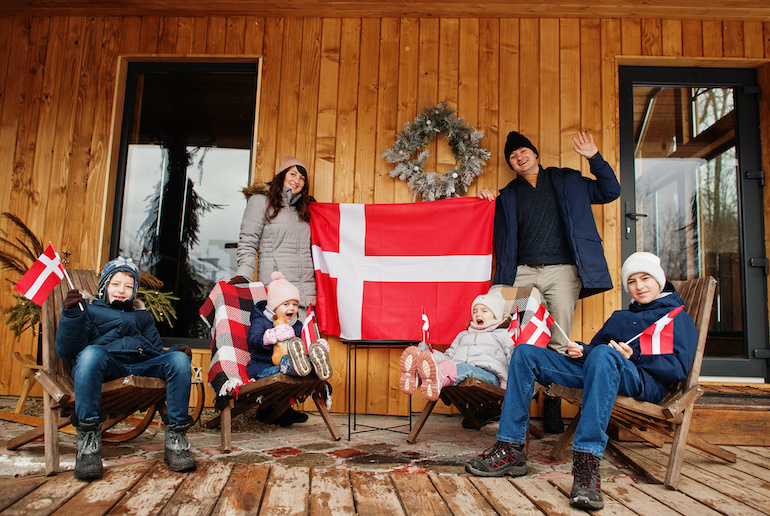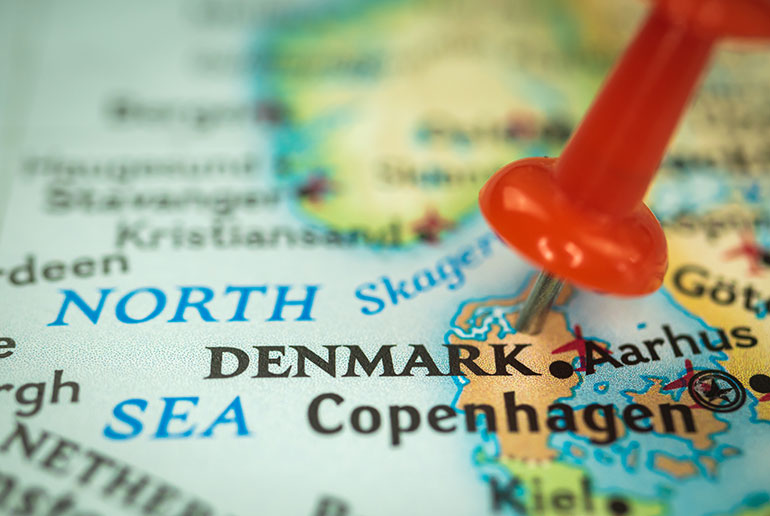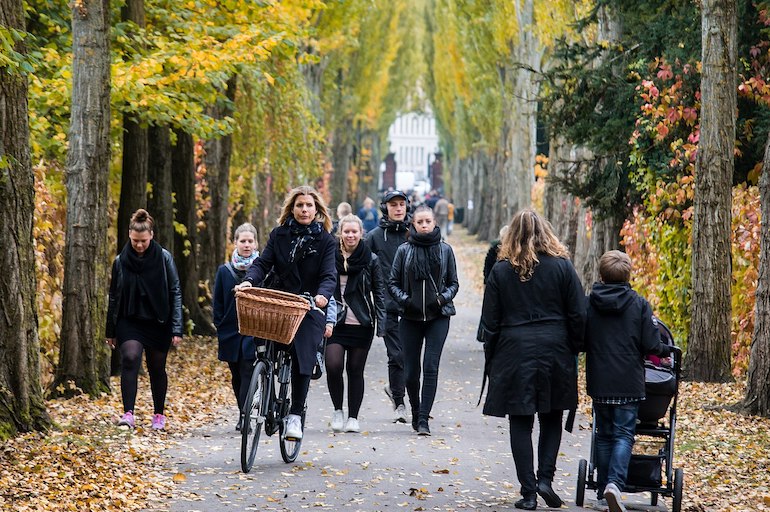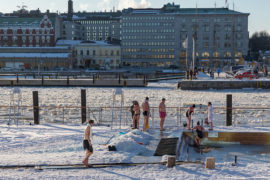You may already know that Danish people come from Denmark. But do you know anything about the country itself, or the impact of the Viking age on Danish culture?

You may wonder: what are people from Denmark called? Or, what nationality is a Danish person? And if so, we’ve got some answers for you.
So read on to find out all about the Danes, their history, culture and origins.
What country are Danish people from?
Danish people are from Denmark, a small European country north of Germany, to the west of Sweden and south of Norway.
It’s the southernmost country in Scandinavia, and a member of the EU. For more on the Scandinavian countries, see our guide to Scandinavian vs Nordic: what’s the difference?

Denmark consists of some 1500 islands, plus the Jutland Peninsula which is connected to mainland Germany.
The country’s three largest islands are Zealand, home of the capital Copenhagen, North Jutlandic Island and Funen, all of which are connected by bridges.
For more on Denmark’s iconic bridges, see our ultimate guide.
What do you call people from Denmark?
People from Denmark are called Danes, and they speak Danish – not to be confused with the pastries, which actually originated from Austria!
If people speak Danish, where are they from?
There are around six million Danish speakers in the world, of whom some 95 percent live in Denmark.
Danish is also spoken in Greenland, often for administrative and political purposes, though the official language of the island is Greenlandic.
Danish is the second official language of the Faroe Islands (after Faroese), where it’s also taught in schools.
There are also small populations of Danish speakers in southern Sweden and northern Germany, where good transport links facilitate easy cross-border relationships.
For more on the Danish language, see Where is Danish spoken?
Where are people who are Danish from?
Clearly most Danish people are actually from Denmark, but during the nineteenth century a significant number of Danes emigrated to the USA for economic and social reasons.
Most settled around Wisconsin, Michigan, North and South Dakota and Iowa.
It’s estimated that today some 1.4 million Americans have direct Danish descendants, with the cities of Chicago and Racine, Wisconsin claiming the most Danish American citizens.
Where do most Danish people live?
Denmark has a population of around 5.9 million people, with Copenhagen being by far the most populous city in the country.

Some 1.4 million Danes live in the Copenhagen urban area, and around 2 million in the city and its wider metropolitan district.
Aarhus has the second largest population, at around 336,000 residents, followed by Odense (180,000), Aalborg (143,000) and Frederiksberg (103,000).
Where are Danes originally from?
The first inhabitants in the country that we now call Denmark are thought to have migrated there from southern and eastern Europe at the end of the last Ice Age – around 10,000 BC.

Originally hunters and fishermen, they settled in Denmark and by 3000 BC were farming the flat, fertile land using tools made from stone, bronze and iron.
Later, the area now known as Jutland was populated by the Jutes, a Germanic tribe.
In the fifth century, the Jutes, along with two other powerful Germanic tribes the Angles and the Saxons, invaded the southeast coast of Britain. They settled mainly in Kent, the Isle of Wight and southern Hampshire.
And today, Brits living in the southeast of England typically share about 11 percent of their DNA with the Danes.
Are all Danes descended from Vikings?
The Viking era is probably the best known period of Danish history, with tales of these blood-thirsty, sea-faring pirates and warriors capturing imaginations around the world.

The Vikings originated from Denmark, Norway and Sweden and were master shipbuilders who travelled across the sea to Britain, Greenland, Russia, Turkey and as far as the USA.
From the 9th–11th centuries, they sailed the world, exploring, trading, fighting, stealing and colonising lands.
So whilst it is true that some Danes are descended from the Vikings, so too are some Swedes, Norwegians, Icelanders and, indeed, Brits.
In fact, some Danes argue that since the Vikings left Denmark, it is the countries that they invaded and settled in, such as England, Scotland and Iceland, that are more likely to have direct descendants of the Vikings than those who remained in Denmark!
The formation of the kingdom of Denmark began in the post-Viking era, but it wasn’t until 1397 that Denmark, Norway and Sweden joined together to become the Kalmar Union, a single monarchy ruled by Queen Margrethe I.
Sweden broke away from the Kalmar Union in 1523, which led to many battles between Denmark and Sweden over land.
The former Danish districts of Skåne, Halland and Blekinge were ceded to Sweden in 1658, and Denmark finally became a constitutional monarchy on June 5, 1849.
Where are people of Danish descent from?
As we can see from the country’s chequered history, people of Danish descent can come from a variety of different places.
The influence of neighbouring countries, such as Germany, Sweden and Norway is strong, and many Danes have antecedents from these countries.
But the original settlers came from southern and eastern Europe, so some Danes can trace their roots back to even further afield.
What do Danish people look like?
The traditional stereotype of a Dane is tall, blonde and healthy, with Viking DNA and long, flowing locks! Of course, this is not an accurate picture and Danes come in all shapes, sizes and skin tones.

Approximately 86 percent of Denmark’s population are ethnic Danes, whilst the other 14 percent is made up of a variety of other ethnicities.
Whilst it is true that Denmark’s population consists largely of ethnic Danes, its cities are modern multicultural places with a sizeable population of other ethnic groups.
The largest minority groups living in Denmark in 2023 come from Poland, Ukraine, Romania, Germany, Syria, Turkey, Iraq, Iran, Bosnia and Herzegovina and the UK.
Are Danish people from Denmark?
This might seem like an obvious question, but as we’ve seen above, it’s not as simple as all that.
Yes, Danish people come from Denmark, but their antecedents derive from a variety of origins and over hundreds of years Denmark has absorbed cultures and influences from many different countries.
Not only that, but Danish people, in particular the Vikings, have travelled widely and spread their culture and DNA round the world.
See also:
Danish vs Dutch: what is the difference?
Is Denmark in Europe?
Is Denmark a socialist country?









